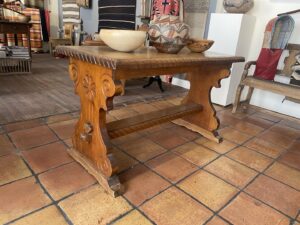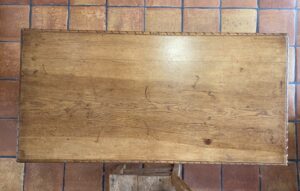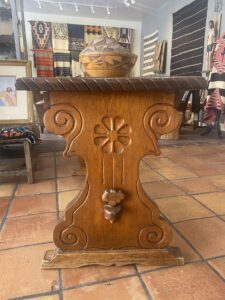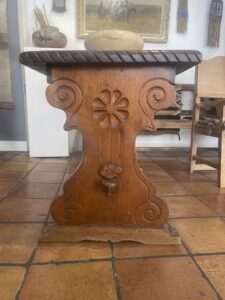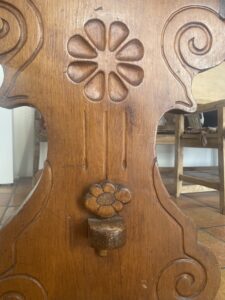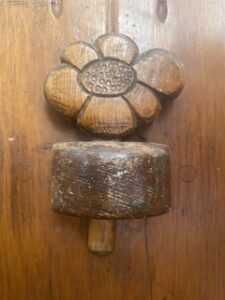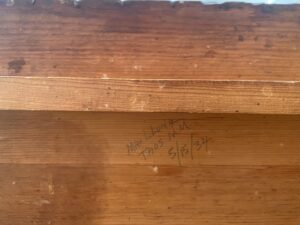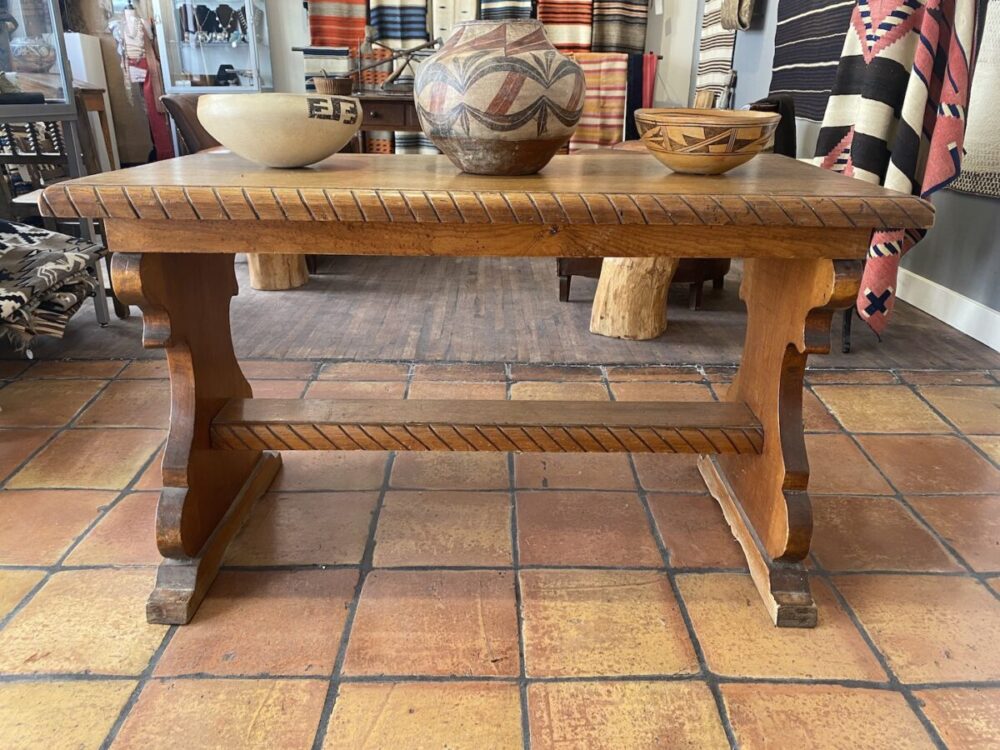
New to the Gallery a Max Luna Library Table
- by Jamie Compton
- in New Gallery Item
- posted June 3, 2022
This Spanish Colonial New Mexican table came from a client born in New Mexico who’s grandfather knew Max Luna, having worked along side him. He purchased this table directly from him around the time that it was made. It’s a really lovely example of the early end of the resurgence of the making of Spanish Colonial furniture in New Mexico.
Maximo Luna (1896 – 1964)
Maximo (called Max) Luna was one of the main teachers that instructed the Hispanic and Pueblo craftsmen how to make the mortise and tenon furniture that came forth during the WPA period. He was responsible for bringing back to life the craftsmanship of wood, handmade furniture in the Spanish Colonial style of New Mexico. A century earlier and even further back this type of furniture was the mainstay of the era. He began teaching by way of the Department of Vocational Education (SDVE) in 1936, 2 years after he made this table. He taught for 35 years and was named posthumously to the New Mexico Education Association’s Hall of Fame in 1966. He was married to fiber artist Crisostoma Luna.
A Small Library or Trestle Table
This table might be called a library table, or a trestle table, characterized by the foot spacer spanning the lower aspects of the side supports. It is made of pine and the surface has mellowed to a wonderful and warm patina. The table measures 50″ by 24.5″ on top, and 29.5″ tall. This smaller size makes it ideal for use in a home. The top panel is made of two thick (1.75″) boards on top, with one of the boards spanning 19.25″ of the total 24.5″ top width. The availability of this prime heart wood without inclusions is rare to find by 1936 as the availability of these large boards from large timber was fast becoming extinct. Most of the sizable heartwood had been used up by this point. The trestle portion is even thicker than the top piece, measuring almost 2.25″ thick.
The end supports are hourglass in shape and include a center rosette cut into the wood in the top portion. Flanking this on both sides are volutes giving the curvaceous shape to the edges. The bottom of the hourglass is a repeat of the top portion, except the rosette is smaller and is carved wood protruding out from the support and has a stem on the underside of the tenon sticking out – looking like it’s a flower stuck into the support (see photo).
Max Luna signed and dated (5/15/34) the table on its underside top piece. This was the common place where makers would leave their mark.
This table is available for sale at my gallery at 28 Burro Alley. The price is SOLD. Please reach out if you have questions.

